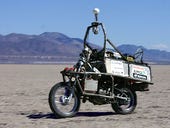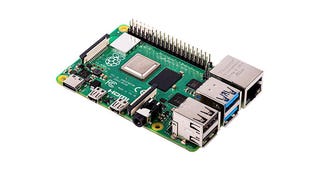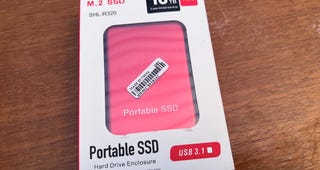
Business, tech leaders' challenge : Finding innovation that matters
Every executive wants to create innovation that matters and CES 2016 gave us a glimpse on a few developments worth tracking on an ongoing basis.

Every executive wants to create innovation that matters and CES 2016 gave us a glimpse on a few developments worth tracking on an ongoing basis.

The Cray intellectual property and personnel will help Intel "achieve ExaFlops performance."

Researchers reckon that they can solve the US government sponsored crowdsourcing game, Tag Challenge 'within the first hour of the competition' if viral communication by social media works as predicted.

On the final day of the Intel Developer Forum, CTO Justin Rattner made the case for more powerful PCs and servers with tens or even hundreds of processing cores.

Governments around the world are trying to save well paying jobs in a variety of sectors including automakers, construction and other industries. But where's the government in attempting to save jobs or create new innovation in ICT?

Vulcan shares many traits with its reclusive founder, Paul Allen, yet behind the scenes the company is responsible for philanthropic support to research and community-building activities, as well as investing commercially in the likes of Radar Networks (the company behind Twine) and Evri.Last week, I had the opportunity to talk with Mark Greaves, Vulcan's Director of Knowledge Systems Research, and the resulting podcast was released earlier today.

Computers are fast for many tasks, but humans are faster for identifying objects or people in images. But is it possible to combine the speed of a computer with the sensitivity of the human brain? According to a IEEE Spectrum Online article, 'A Brainy Approach to Image Sorting,' several teams at Honeywell, Teledyne Scientific and Imaging, and Columbia University think so. They're working on a Defense Advanced Research Projects Agency's program called 'Neurotechnology for Intelligence Analysts' (NIA). One of the teams said intelligence analysts can sort images six times faster than before. But there is a culprit: they'll need to carry for hours a 32-electrode EEG cap which detects their brain activity. But read more...

All over the world, systems that directly connect silicon circuits to brains are under development, and some are nearly ready for commercial applications, according to a new report from the World Technology Evaluation Center and announced by a news release of the University of Southern California (USC). Some of the conclusions of this report about brain-computer interfaces (BCIs) are quite surprising. For example, North America researchers focus almost exclusively on invasive BCIs while noninvasive BCI systems are mostly studied in European and Asian labs. If you don't have enough time to read the 234-page report, please look at my selection of four exciting projects from all over the world.

Over the course of the next few weeks I'd like to sketch out three sets of business requirements and then ask which technologies, and correspondingly what kind of IT organization, would be best for each.

Teams from around the country are getting ready for the 2005 Darpa Grand Challenge for robotic cars.
 Google finally launches its Find My Device network. Here are the Android models that support it
Google finally launches its Find My Device network. Here are the Android models that support it
 3 million smart toothbrushes were not used in a DDoS attack after all, but it could happen
3 million smart toothbrushes were not used in a DDoS attack after all, but it could happen
 Five CES 2024 products I'd buy as soon as they'd take my money
Five CES 2024 products I'd buy as soon as they'd take my money
 Raspberry Pi 4 Model B review: A capable, flexible and affordable DIY computing platform
Raspberry Pi 4 Model B review: A capable, flexible and affordable DIY computing platform
 Which Microsoft Surface PC is right for you?
Which Microsoft Surface PC is right for you?
 Inside a fake $20 '16TB external M.2 SSD'
Inside a fake $20 '16TB external M.2 SSD'